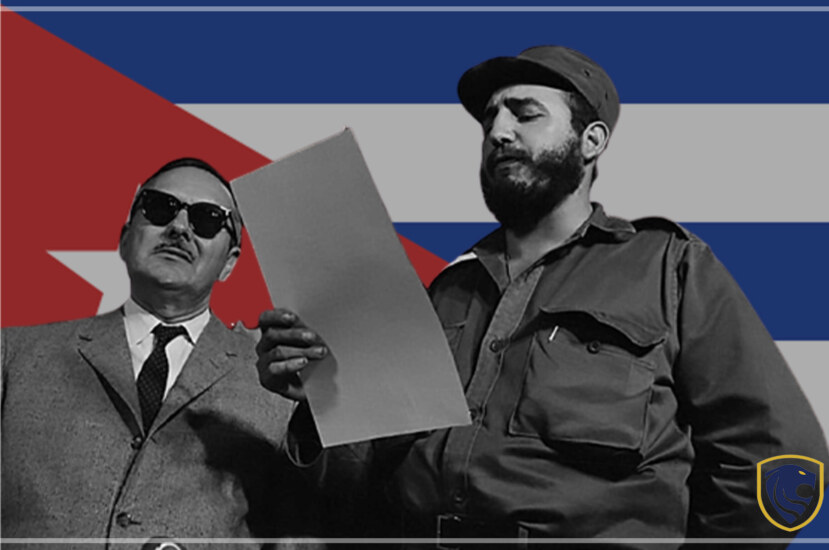Cuba is an island nation. This Latin American country is a Marxist- Lenin one-party socialist state. Cuba is celebrated for the revolution that took place from 1953 to 1959, especially by those who admire socialism. The key personalities in the Cuban revolution, the likes of Fidel Castro, and Che Guerra have gone into history as socialist icons.
The background that put the foundation for the Cuban Revolution
Cuba’s recent history starts from the arrival of Christopher Columbus in 1492, and the subsequent Spanish occupation.
Spanish Occupation
In 1521, Spain fully occupied Cuba, thus Cuba becoming a colony of the Spanish empire. Under Spanish rule, sugarcane cultivation became a blooming manufacturing industry in Cuba. Moreover, most of the Latin American nations that were under Spain got freedom by 1868. This followed several freedom fights in Cuba. Moreover, Carlos Manuel de Céspeded who was a Cuban planter and sugar mill owner began the first revolt with his followers. It lasted for a decade. But it turned out to be unsuccessful. In addition, the second revolt which is known as ‘the Little War’ started in August 1879 and ended up unsuccessful. The next freedom fight was named the ‘Cuban War of Independence” led by Cuban poet Jose Marti. He died on the battlefield in May 1895.

The war was still going on when the United States stationed its forces in Cuba in 1898.
America blamed the incident of an American naval ship exploding and sinking in the Havana Harbour, on Spain. Furthermore, it resulted in a war between Spain and America. It began in April 1898 and came to an end in August 1898. Spanish empire collapsed as America won the war and Cuba was under America. In contrast, in 1902 America withdrew formally from the Cuban island and Cuba became an independent nation.
Platt Amendment
Yet America imposed the Plat Amendment on Cuba which contravened the sovereignty of Cuba. Some of the conditions were overwhelmingly dominating as Cuba was required to provide lands necessary for coaling or naval stations for the United States. The USA would mediate when the need arises to safeguard the independence of Cuba, to save life and property, and the freedom of individuals. And Cuba could not sign any treaty with a foreign power that would infringe on Cuba’s independence or acquire and control any part of the island.

Batista Regime
It is Fulgencio Batista’s rule that laid the ground for the Cuban revolution. Batista could be the president of Cuba for two terms. of Cuba. In the first term, he was popular among people. Furthermore, in 1933 he came to power by overthrowing Gerardo Machado who was a brutal dictator. In 1934 the US ended the intervention in Cuban affairs. Accordingly, policies concerning tariffs and sugar quotas were amended in favor of Cuba. He retired in 1944 and returned to politics in 1952 through a coup. People at large accepted him happily as the prior government of ‘Carlos Prio Socarras’ was corrupt.

To the disappointment of the people, Batista turned out to be a dictator and exercised power over the press, universities, and congress. Corruption was happening on a grand scale. Presidential elections were held in 1954 and 1958, but they were rigged. He got financial, military, and logistical support from the USA. Also, he allied with the wealthiest who were mostly the landowners with sugar plantations. During his period of rule, most of the sugar cane industries fell into foreign ownership. 70% of cultivable lands were retained by Americans. The chasm between the poor and rich increased. Batista used repressive and tyrannical methods to quell the opposition mounting the society.
Fidel Castro tried to oust Batista through legal means. When he failed, he resorted to revolution.
Fidel Castro
Fidel Castro was a lawyer by profession and had a membership of the reformist Cuban People’s Party. After he failed in his attempts to oust the Batista regime he formed a rebel group in 1953. Furthermore, he attacked ‘Moncada military barracks in Santiago de Cuba to start an insurgence.

Many of them lost their lives. Castro was arrested along with his brother and sentenced to 15 years of imprisonment. They were released in 1955 due to international pressure. Fidel Castro and his brother Raul Castro set off to Mexico to resume their rebellion against the Batista regime. Raul Castro was the youngest of three brothers. Moreover, he too played a key role in the revolution.
They were joined by Che Guevara the same year.
Che Guevara
Che Guevara was born in Argentina on 14th June 1928. His visit to Guatemala in 1953, was transformative, as he became a diehard Marxist in Guatemala. The president in Guatemala was in the process of bringing in leftist social reforms. But his regime was toppled by a coup aided by the US Central Intelligence Agency.

He developed an animosity towards the USA, thinking the USA would resist governments that have progressive and leftist ideologies at all times. This incident was the mainspring of his thinking that he should help in bringing about socialism via a worldwide revolution. Moreover, he is known for his guerilla warfare tactics. Later he obtained Cuban citizenship. After his execution by the Bolivian army he is held in high esteem as a martyred hero by people with leftist ideas.
26th July Movement
In 1956 Castro began his next revolt from the eastern coast of Cuba with a group of 81 men. Only Castro brothers, Che Guevara, and nine others could escape, all the others were either killed or captured. They withdrew to a mountain range called Sierra Maestra. So many volunteers joined their cause and they executed several guerrilla warfares against the government forces. Castro’s forces appeared victorious and were in good spirits while the government’s armed forces were demoralized and poorly led. After multiple defeats and the loss of internal political support, Batista fled the country on the 1st of January 1957.

So, Castro’s forces won ‘the 26th July movement’ in the end. 26th July movement was named after Castro’s first revolt, the failed attack on the Moncada Barracks in the city of Santiago de Cuba. That revolt occurred on 26th July 1953. ‘ 26th July Movement’ was a striking win as Castro’s force which constituted 800 guerillas won over the government force of 30000 professional army personnel.
Strained Relationship with the United States
Ever since the Cuban revolution, the USA and Cuban relationship is tense. It was a US-backed government that they toppled. They established a socialist state and aligned with the Soviet Union. Also, they established a socialist government and nationalized American companies. As a retaliation, the USA imposed sanctions on Cuba.

Equality for people
After the revolution, the newly established socialist government brought in social reforms that ensured equality. They upheld racial integration, and women’s equality and focused on communication, healthcare, housing, and education when introducing the new reforms. Before 1959, only half of the children got at least some kind of education. Towards the end of 1960, all Cuban children obtained basic education at a minimum. Living conditions of Afro-Cubans improved due to anti-discrimination legislation and general social reforms.

The issue of Racial integration was sorted out. They proclaimed that they would ensure the overall well-being of people by conferring the right to health, education, work, food, security, culture, and science on all the citizens in Cuba. According to the new anti-discrimination legislation, it was prohibited to mention even the words like ‘discrimination’ or the topic related to racial equality.
Nevertheless, freedom in Cuba is restricted, and that can be attributed to the characteristics akin to socialism. People in Cuba derived of freedom of expression, freedom of assembly, etc. Those who object to socialism are prohibited from converging in large groups. In terms of economic status, Cuba’s economy is in a miserable state.




